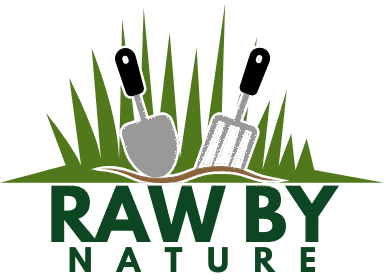Gardening is a rewarding journey that connects us to nature and nurtures our well-being, but like any great adventure, the right tools are crucial for success. Whether you’re just planting your first seed or have years of experience under your belt, understanding which tools are essential can transform your gardening experience.
For beginners, the world of gardening tools can seem overwhelming, yet with the right guidance, it becomes an exciting exploration. Experienced gardeners know that having the right tools not only makes tasks easier but also enhances the joy and efficiency of tending to your garden.
In this article, we will delve into the seven indispensable tools that every gardener, regardless of experience, should have in their arsenal. You’ll discover how each tool serves a unique purpose, helping you cultivate a garden that thrives and brings you endless satisfaction.
Choosing the Perfect Hand Trowel

A hand trowel is an essential tool for any gardener, ideal for tasks like planting seedlings and transferring soil. When choosing a hand trowel, look for one with a sturdy, rust-resistant blade and an ergonomic handle for comfort during extended use.
The blade material is crucial for durability; stainless steel is a popular choice due to its resistance to corrosion and ease of cleaning. For those seeking longevity in their tools, a trowel with a full-tang construction—where the blade extends into the handle—offers superior strength.
Consider the size and shape of the blade based on your gardening needs. A narrow blade is perfect for digging in tight spaces or around existing plants, while a broader blade can be more effective for moving larger amounts of soil or compost.
Experienced gardeners might appreciate a trowel with a depth gauge marked on the blade, which helps ensure bulbs and seedlings are planted at the correct depth. This feature can be particularly useful for crops that require specific planting depths, like garlic or tulips. Investing in a high-quality hand trowel will make your gardening tasks more efficient and enjoyable.
The Versatility of Pruning Shears

Pruning shears are an indispensable tool for any gardener, offering both precision and versatility. They are perfect for trimming stems and branches, allowing you to shape your plants for optimal growth and health.
One of the key benefits of using pruning shears is their ability to remove dead or diseased plant material, preventing the spread of infection. This promotes a healthier garden overall, as plants are less likely to succumb to pests and diseases.
For beginners, it’s important to regularly clean and sharpen your pruning shears to ensure clean cuts that heal quickly. Investing in a good quality pair can make a significant difference in your gardening experience, as they are more durable and require less maintenance.
Experienced gardeners can use pruning shears to perform more advanced techniques, such as espalier or topiary, to create visually stunning plant displays. By regularly pruning, you encourage plants to produce more flowers and fruits, enhancing the beauty and productivity of your garden.
Mastering the Use of a Garden Fork

When it comes to mastering the use of a garden fork, understanding its versatility is key. This tool is essential for breaking up compacted soil, turning compost, and aerating garden beds, making it a true multi-tasker in any garden.
To begin with, using a garden fork to loosen soil allows your plants to access nutrients and water more effectively. Insert the fork into the soil and gently lift and turn it, which helps improve drainage and promotes healthier root growth.
For compost management, a garden fork is indispensable. Regularly turning your compost pile with a fork speeds up decomposition and helps distribute moisture evenly, resulting in rich, usable compost much faster.
Advanced gardeners will appreciate the garden fork’s role in dividing perennials. By carefully prying apart the root clumps, you can rejuvenate aging plants and propagate new ones, expanding your garden without extra cost.
Why Every Gardener Needs a Spade

A spade is an indispensable tool for any gardener, offering both versatility and efficiency. Its sturdy blade and handle are designed to make digging, edging, and trenching tasks easier, saving you both time and effort in the garden.
When working with a spade, it’s essential to choose the right type for your needs. Opt for a rounded blade for digging holes and transplanting, or a flat blade for cutting through roots and edging beds.
For beginners, mastering the basic technique of using a spade involves leveraging your body weight to drive the blade into the soil. This method reduces strain on your arms and allows for more precise digging, especially in clay-heavy soils.
Experienced gardeners can maximize their spade’s potential by using it to incorporate organic matter into the soil. By mixing compost or well-rotted manure into the top 6-12 inches of soil, you enrich its nutrient content, promoting healthier plant growth.
Efficient Weeding with a Hoe

Using a hoe for efficient weeding is an essential skill for gardeners seeking to maintain healthy, thriving plants. The right hoe can quickly remove weeds without disrupting the surrounding soil, making it a time-saving tool in your gardening arsenal.
To make the most of your hoe, choose one that suits your garden’s needs, such as a stirrup hoe for slicing weeds or a scuffle hoe for more aggressive weeding. Regularly sharpening the blade will make the task easier and more effective, allowing you to cut through weeds with minimal effort.
Efficient weeding involves more than just removing visible weeds; it requires addressing their roots. By hoeing at a shallow depth, you disturb the weed roots without damaging the roots of your desired plants, promoting healthier growth.
For optimal results, hoe your garden during dry weather. This ensures that uprooted weeds dry out and die rather than resettling in the soil. Regular hoeing, especially early in the growing season, can help prevent weeds from establishing a foothold, reducing the need for more intensive weeding later on.
Watering Wisely with a Garden Hose

Watering is a crucial aspect of gardening, and using a garden hose wisely can make all the difference. Choosing a hose with adjustable nozzles allows you to control the water pressure, ensuring your plants receive the right amount of moisture without being overwhelmed.
It’s essential to water early in the morning or late in the afternoon to minimize evaporation and fungal diseases. This timing allows water to seep deep into the soil, promoting strong root growth and healthier plants.
For beginners, a simple rule is to water when the top inch of soil feels dry to the touch. More experienced gardeners might consider a soil moisture meter to get precise readings, ensuring optimal hydration for their plants.
Consider the type of soil in your garden, as this affects how often you should water. Sandy soils drain quickly and may need more frequent watering, while clay soils retain moisture longer and require less frequent attention.
The Role of a Wheelbarrow in Gardening

A wheelbarrow is an invaluable tool in any gardener’s arsenal for its ability to transport heavy loads with ease. It allows you to move soil, compost, mulch, and plants without straining your back, making garden maintenance more efficient and less physically demanding.
For beginners, choosing the right wheelbarrow involves considering the size of your garden and the types of tasks you’ll be performing. A smaller, lightweight model might suffice for flower beds and small vegetable gardens, while a larger, more robust wheelbarrow is better suited for extensive landscaping projects.
Experienced gardeners can benefit from wheelbarrows with advanced features such as dual wheels for stability and non-pneumatic tires that prevent flats. These features can make navigating uneven terrain and carrying heavier loads more manageable, enhancing productivity in your gardening efforts.
When using a wheelbarrow, it’s wise to distribute the load evenly to maintain balance and control. This not only ensures safer transportation but also maximizes the tool’s efficiency, allowing you to accomplish more with less effort.
Conclusion: Growing Success with These Plants
In nurturing the garden of relationships, just like tending to a physical garden, having the right tools can make all the difference. We’ve explored seven essential tools: communication, trust, empathy, patience, flexibility, shared goals, and appreciation. Each of these elements plays a critical role in cultivating a thriving, resilient relationship. Communication opens doors to understanding; trust builds a solid foundation; empathy fosters deep connections; patience allows time for growth; flexibility helps in weathering storms; shared goals align paths; and appreciation nurtures love and respect.
Now, take a moment to reflect on which of these tools you can start sharpening today. Perhaps begin with a heartfelt conversation or a gesture of appreciation. Implementing even one of these tools can set the stage for positive change.
Remember, healthy relationships are nurtured over time, requiring continuous effort and attention. Bookmark this article as your go-to guide for relationship growth, ensuring you have a handy reference for these invaluable tools. As you embark on this journey, know that with dedication and the right tools, your relationships can blossom into enduring sources of joy and fulfillment. Embrace the opportunity to cultivate stronger, more meaningful connections today.


